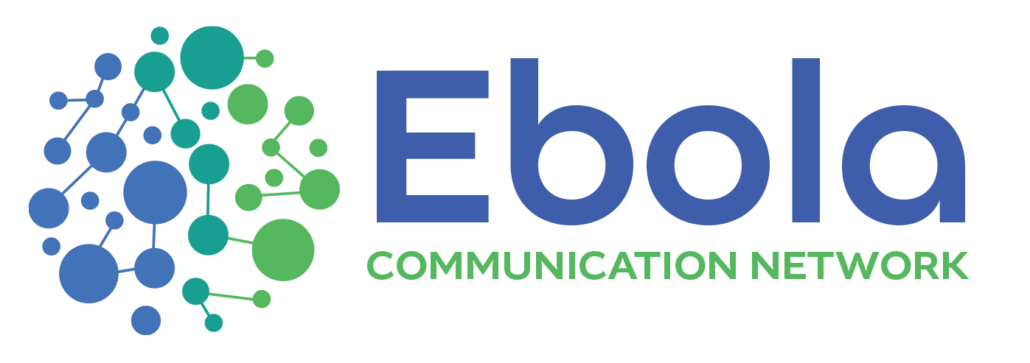Transmission – County- level Liberia October 13 2014
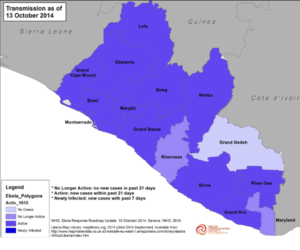 Transmission – County- level Liberia October 13, 2014 (Full-sized image)
Transmission – County- level Liberia October 13, 2014 (Full-sized image)
 Transmission – County- level Liberia October 13, 2014 (Full-sized image)
Transmission – County- level Liberia October 13, 2014 (Full-sized image)
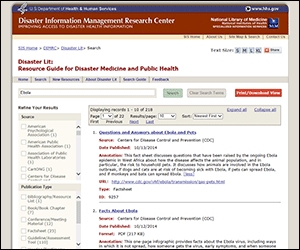 Literature from the U.S. Department of Health & Human Services about Ebola.
Literature from the U.S. Department of Health & Human Services about Ebola.
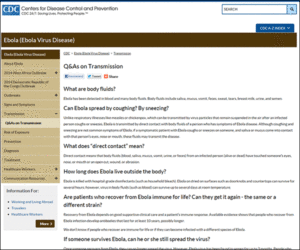 From the CDC, questions and answers about the transmission of Ebola.
From the CDC, questions and answers about the transmission of Ebola.
 Information about an introductory training course for health care professionals intending to travel to West Africa to aid in the Ebola outbreak. Learn more.
Information about an introductory training course for health care professionals intending to travel to West Africa to aid in the Ebola outbreak. Learn more.
This poster lists and illustrates five ways to keep Ebola from spreading:
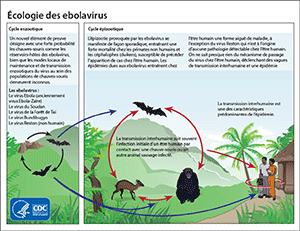 CDC graphic in French shows the life cycle of the ebola virus. Bats are strongly implicated as both reservoirs and hosts for the ebolavirus. Of the five identified ebolavirus subtypes, four are capable of human-to-human transmission. Initial infections in humans result from contact with an infected bat or other wild animal. Strict isolation of infected patients is essential to reduce onward ebolavirus transmission. (CDC Website)
CDC graphic in French shows the life cycle of the ebola virus. Bats are strongly implicated as both reservoirs and hosts for the ebolavirus. Of the five identified ebolavirus subtypes, four are capable of human-to-human transmission. Initial infections in humans result from contact with an infected bat or other wild animal. Strict isolation of infected patients is essential to reduce onward ebolavirus transmission. (CDC Website)
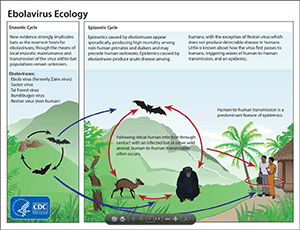 CDC graphic shows the life cycle of the ebolavirus. Bats are strongly implicated as both reservoirs and hosts for the ebolavirus. Of the five identified ebolavirus subtypes, four are capable of human-to-human transmission. Initial infections in humans result from contact with an infected bat or other wild animal. Strict isolation of infected patients is essential to reduce onward ebolavirus transmission. (CDC Website)
CDC graphic shows the life cycle of the ebolavirus. Bats are strongly implicated as both reservoirs and hosts for the ebolavirus. Of the five identified ebolavirus subtypes, four are capable of human-to-human transmission. Initial infections in humans result from contact with an infected bat or other wild animal. Strict isolation of infected patients is essential to reduce onward ebolavirus transmission. (CDC Website)
 This poster’s audience is the general community in Liberia and has information on protecting yourself and your family, and steps to take to seek care. It has clear calls to action, is well-designed, and the use of graphics makes it appropriate for low-literacy populations.
This poster’s audience is the general community in Liberia and has information on protecting yourself and your family, and steps to take to seek care. It has clear calls to action, is well-designed, and the use of graphics makes it appropriate for low-literacy populations.
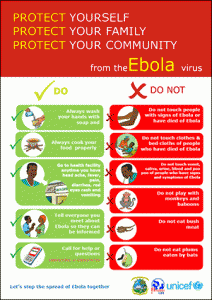 This poster’s audience is the general community in Liberia and has information on what to do and what not to do to protect yourself and your family. It has clear calls to action and is bright and attractive. It has good use of graphics. The use of text makes it appropriate for an audience that can read.
This poster’s audience is the general community in Liberia and has information on what to do and what not to do to protect yourself and your family. It has clear calls to action and is bright and attractive. It has good use of graphics. The use of text makes it appropriate for an audience that can read.

The Ebola Communication Network was originally developed by the Health Communication Capacity Collaborative (Cooperative Agreement #AID-OAA-A-12-00058) and expanded under Breakthrough ACTION (Cooperative Agreement #AID-OAA-A-17-00017) both under the leadership of Johns Hopkins Center for Communication Programs. This website is now maintained by Johns Hopkins Center for Communication Programs and its contents are the sole responsibility of CCP. The contents of this website do not necessarily reflect the views of USAID, the United States Government, or Johns Hopkins University.
